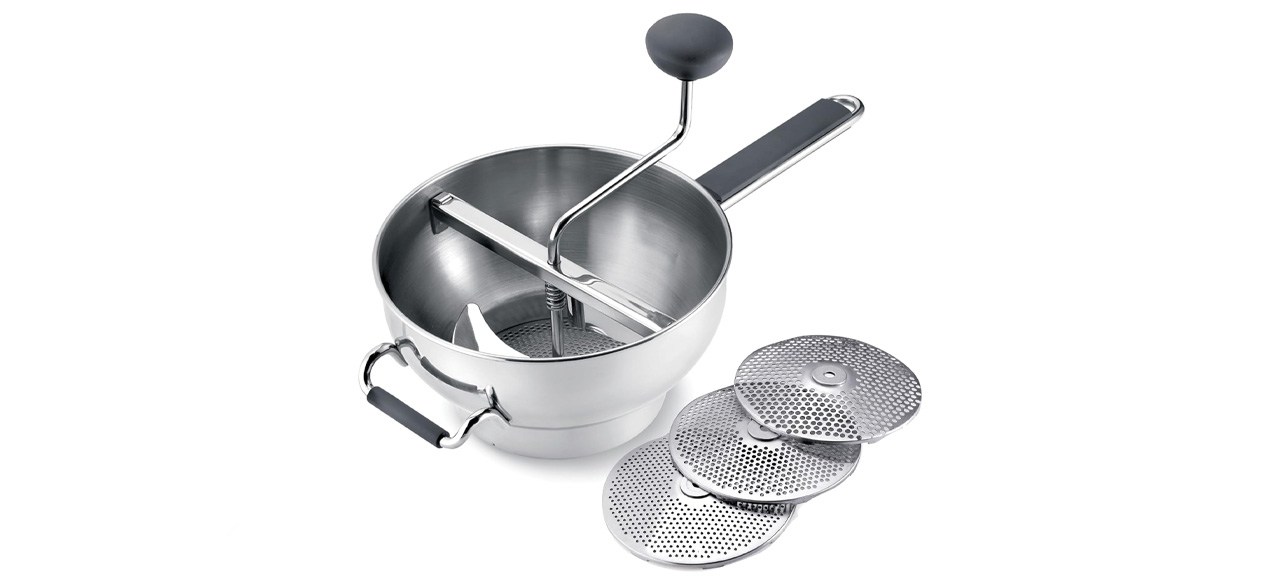Top Food Mills for Efficient Food Preparation
Selecting the Optimal Food Mill: A Comprehensive Guide
The issue of food waste is a pressing concern in the United States, with the United States Food and Drug Administration reporting that as much as 30 to 40 percent of food produced goes uneaten. One effective method for mitigating this waste is canning surplus fruits and vegetables, a task made considerably easier with the use of a food mill.
Food mills, also referred to as rotary mills, are kitchen devices used for grinding fruits and vegetables to create a variety of culinary staples, including sauces, soups, and broths. When considering a food mill purchase, several factors warrant attention: capacity, size, the number and type of milling discs, and the style of mounting. Among the many options available, the Cuisipro Deluxe Food Mill stands out as a premium choice for those seeking a durable, long-lasting product.
Essential Components of Food Mills
Understanding the basic components of a food mill can be beneficial when making a selection.
– Crank: Located on top of the food mill, the crank is operated manually and can come with various handling preferences, such as a rounded ball or a vertical grip.
– Grinding Plate: As the crank is turned, it activates the grinding plate, which pushes food through the milling disk.
– Milling Disk: This integral component contains perforated holes of varying sizes, determining the fineness of the food being processed. Smaller holes yield finer consistencies, while larger holes create chunkier textures.
– Legs: Typically supporting the food mill over a bowl or pot, some models feature hooks to enhance stability and reduce mess during operation.
Types of Food Mills
Food mills come in several varieties to accommodate different user needs:
– Manual Bowl- or Pot-Mounted Mills: These are designed to rest atop bowls or pots, with sizes ranging from one to eight quarts.
– Manual Stand-Alone Mills: Ideal for high-capacity needs, these models operate from a flat surface and can hold a gallon or more.
– Mixer Attachments: These attach directly to stand mixers and are designed for quick processing, though they may not handle large quantities efficiently.
– Electric Mills: More expensive than manual options, electric mills provide rapid processing capabilities and can handle substantial quantities, making them suitable for large batches.
Choosing a Quality Food Mill
When selecting a food mill, consider the following features:
– Interchangeable Mill Discs: This feature allows for versatility in food texture from purees to chunky sauces.
– Capacity: A higher capacity mill saves on time and effort, particularly for larger cooking tasks.
– Grinding Plate Angle: A shallower angle facilitates better food processing, assisting in pushing food through the milling disk efficiently.
– Durability and Materials: Stainless steel options tend to be more robust and easier to clean compared to their plastic or aluminum counterparts.
Prices for food mills can range widely, from approximately to 0 or more, depending on their features. When investing in a food mill, one should weigh the initial cost against expected use.
In summary, understanding the function and features of food mills will equip consumers with the knowledge necessary to select the right model for their cooking needs. Whether for occasional use or regular canning, a food mill can be an invaluable tool in any kitchen, contributing not only to enhanced culinary creations but also to reducing food waste.
For those seeking exceptional quality, the Cuisipro Deluxe Food Mill exemplifies durability and convenience, while the Weston Stainless Steel Food Mill offers excellent value for occasional kitchen tasks. As culinary enthusiasts continue to seek sustainable practices, the adoption of food mills stands as a practical solution to food preservation and waste reduction.
Explore and Choose Wisely
With careful consideration of the above factors, consumers can make an informed decision when choosing a food mill that aligns with their needs and facilitates a culinary journey towards sustainability and efficiency.







